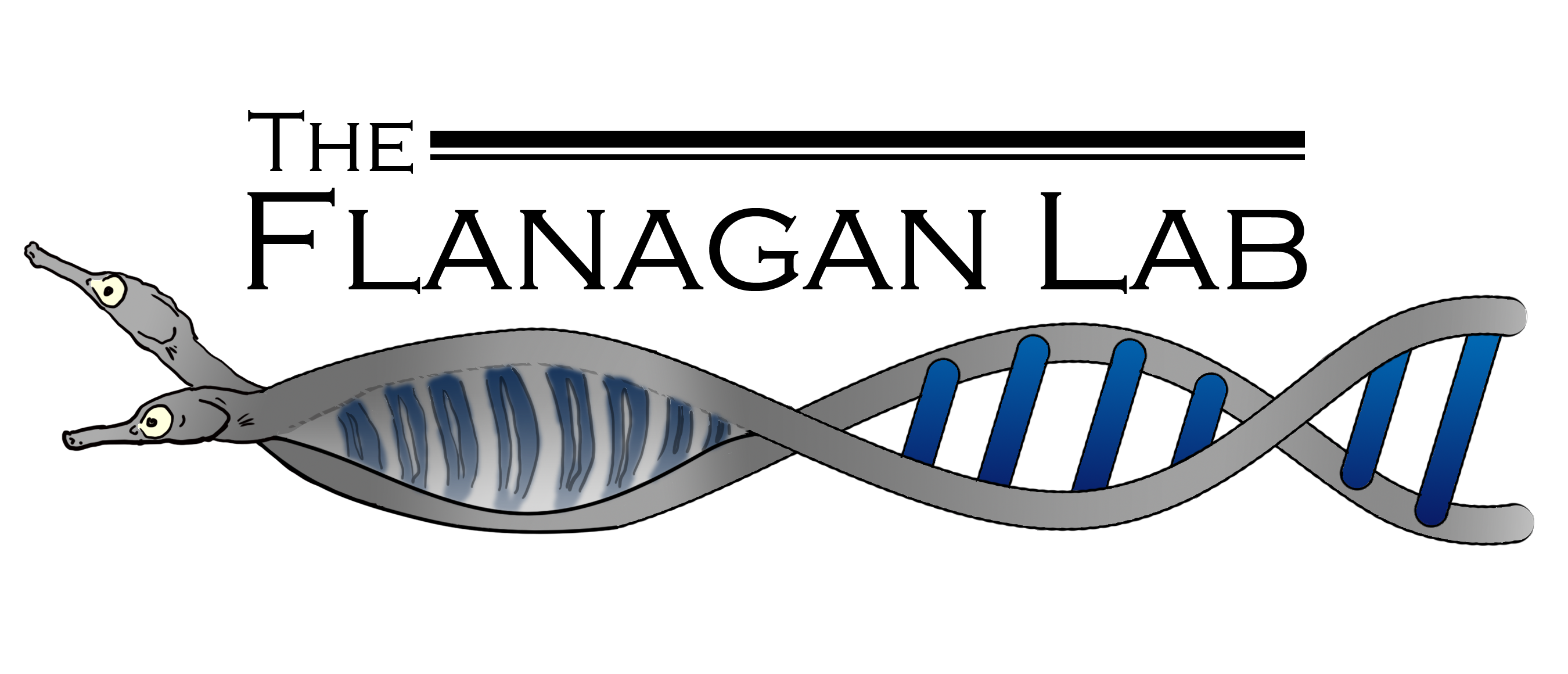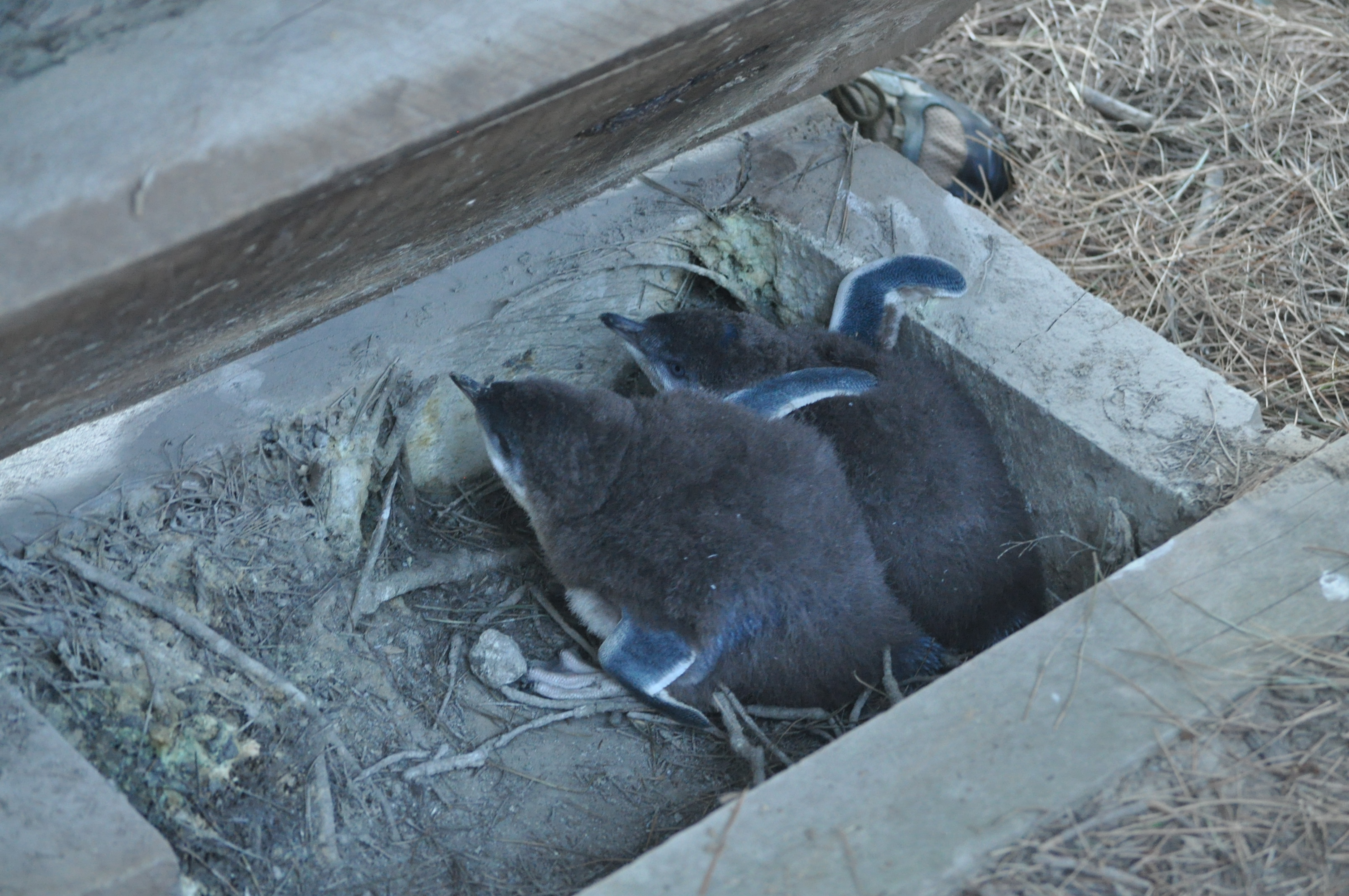Do evolutionary mechanisms impact related populations and species in similar ways?
Genomic data can be used to identify patterns of selection from the background patterns caused by other evolutionary processes (genetic drift, mutation, migration, recombination). Our lab uses these tools to ask questions about the relative importance of different types of selection, the impacts of spatial variation in environments, and to compare patterns of differentiation at the genomic level to differentiation at the phenotypic level. Our work on the Gulf pipefish is building a compelling that will help elucidate how different selection pressures impact the Gulf pipefish genome, and whether patterns of adaptation and sexual selection are repeatable across populations.
That being said, the general dynamics of local adaptation, population differentiation, and novel trait evolution are best understood if multiple evolutionary trajectories are compared. To that end, the lab is developing comparative population genomics and transcriptomics studies using other Syngnathid fishes. Specifically, we have an ongoing project investigating the population genetics of Stigmatopora nigra across New Zealand.
These same genetic tools can be used to understand the drivers of population decline. We are pursuing this question in a large but declining population of kororā, the little blue penguins (Eudyptula minor) in the Banks Peninsula. This collaborative project with Pohatu Penguins and local rūnanga is using a different approach to obtaining genetic data, though: using environmental DNA from faeces and soil to identify prey items and genotype birds at specific genetic markers. We also plan to use the portable long-read sequencer, the Nanopore MinION, to generate whole-genome sequence data from blood samples collected while microchipping birds.
One really exciting and interesting aspect of the little blue penguin work is that the populations across New Zealand differ in their traits and their genetic clade (depending on your taxonomic preferences, which sub-species the populations belong to). In particular, in Banks Peninsula there is a specific morph called the white flippered penguin, which occurs only in a narrow range. We are working to understand how this trait evolved and the mechanisms allowing it to persist despite matings with the typical blue morph.
Finally, the lab is also collaborating with Claudia Meisrimler to investigate the evolution of pathogenicity across strains of the pathogentic oomycete Phytophtora cinnamomi. In this work, we are using nanopore MinION sequencing data to generate genome assemblies for strains of this pathogen that were obtained from different plant hosts – including kauri, pine trees, and avocados. We intend to identify the evolutionary mechanisms impacting the large set of genes referred to the ‘effectome’, which allow the oomycete to attack plant cells, with a long-term goal of applying this knowledge to reduce the harm this pathogen can cause. This research is led by PhD student Alex Cox.
Some relevant papers and theses from the lab include:
Cox A (2023) Insight into the effectoms of Aotearoa cinnamomi isolates by comparative genomics. UC Thesis Repository. DOI:10.26021/14474 link to paper
Howell LA, LaRue M, Flanagan SP (2021) Environmental DNA as a tool for monitoring Antarctic vertebrates. New Zealand Journal of Zoology. DOI: 10.1080/03014223.2021.1900299. link to paper, PDF, my summary
Flanagan SP, Rose E, Jones AG (2021) The population genomics of repeated freshwater colonizations by Gulf pipefish. Molecular Ecology. DOI: 10.1111/mec.15841 link to paper, PDF
Howell, L. 2021. Detecting Antarctic and New Zealand vertebrates using environmental DNA (eDNA). http://dx.doi.org/10.26021/10882. link
Jost L, Archer F, Flanagan SP, Gaggiotti O, Hoban S, Latch E. 2018. Differentiation measures for conservation genetics. Evolutionary Applications . 00:1-10. https://doi.org/10.1111/eva.12590. pdf, link to paper, my summary
, , , , . 2017. Guidelines for planning genomic assessment and monitoring of locally adaptive variation to inform species conservation. Evolutionary Applications. 00: 1–18. https://doi.org/10.1111/eva.12569. pdf, link to paper, my summary
Flanagan SP, and Jones AG. 2017. Substantial differences in bias between single-digest and double-digest RAD-seq: A case study. Molecular Ecology Resources. 00:1–17. https://doi-org.proxy.lib.utk.edu:2050/10.1111/1755-0998.12734. link to paper, my summary, associated code, gwscaR, data, genomic data
Flanagan SP, and Jones AG. 2017. Constraints on the FST-heterozygosity outlier approach. Journal of Heredity. esx048. doi: 10.1093/jhered/esx048 pdf, link to paper, my summary, associated code, data
Flanagan SP, and Jones AG. 2017. Genome-wide selection components analysis in a fish with male pregnancy. Evolution. 71: 1096–1105. DOI: 10.1111/evo.13173 pdf, link to paper, my summary, associated code, data, genomic data
Flanagan SP, Rose E, and Jones AG. 2016. Population genomics reveals multiple drivers of population differentiation in a sex-role-reversed pipefish. Molecular Ecology. 25(20): 5043-5072. doi: 10.1111/mec.13794 pdf, link to paper, my summary, data, genomic data, associated code
Flanagan SP, and Jones AG. 2015. Identifying signatures of sexual selection using genome-wide selection components analysis. Ecology and Evolution. 5(13): 2722-2744. doi: 10.1002/ece3.1546. pdf, my summary, data, associated code

